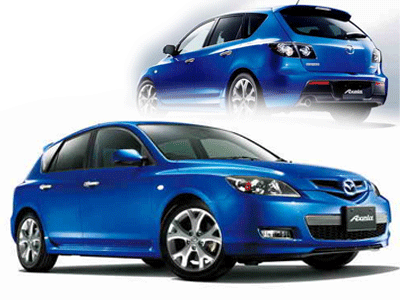BMW Chairman Norbert Riethofer visit to the Mini factory in Oxford England this week to inform staff members that they will soon have two new cars to build. The first confirmed model for production is the Coupe concept that was previewed online last week ahead of its Frankfurt Motor Show rollout. The Coupe will be joined by a second concept at the show which in all likelihood will be the oft-rumored speedster version of the coupe.
Reithofer did not announce any timing for when production of the new models would start production. Also unknown at this time is whether the Coupe and Speedster will be available only in John Cooper Works form or in base Cooper and S flavors as well.
PRESS RELEASE:
MINI Frankfurt show stars confirmed for production at Plant Oxford
* 03.09.2009
* Press Release
Dr.Norbert Reithofer, Chairman of the Board of Management, BMW AG has announced that two new MINI models are to be built at MINI Plant Oxford.
Reithofer confirmed the production plan during his two-day visit to BMW Group UK operations earlier this week.
One of the models based on the MINI Coupé Concept and a concept of the second vehicle will be unveiled for the first time to global media at Frankfurt Motor Show on 15 September.
Images of the stunning MINI Coupé Concept were issued to press on 26 August 2009, exactly fifty years after the first classic Mini was presented to the public.
Likely to feature the impressive 1.6-litre turbocharged MINI John Cooper Works power train, the MINI Coupé Concept is designed to be the most dynamic and agile MINI ever built. Strictly a two-seater, the low roof line, compact dimensions, perfect axle load distribution and lightweight construction are all trademarks of a genuine sports car.
Details of the second model have not yet been announced.
The two new models will join the existing Hatch, Clubman and Convertibles on the production line at Plant Oxford, where all derivatives are produced seamlessly just-in-time and just-in-sequence.
Business Secretary Lord Mandelson said: "The production of the two new MINI models is very good news for Oxford, and for the UK car industry. It is a demonstration of BMW's long term commitment to the UK as it celebrates its 50th birthday this year.
"British drivers have had a long love affair with the MINI and I'm sure that this will continue for many years to come."
Dr. Juergen Hedrich, Managing Director of MINI Plant Oxford, said: "The fact that Plant Oxford will be building these exciting new models shows the high level of flexibility of the plant and its associates. The MINI family has a bright future.
Start dates for these two new models to enter production will be confirmed in due course.




